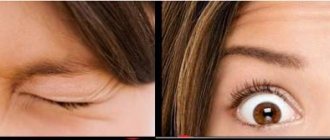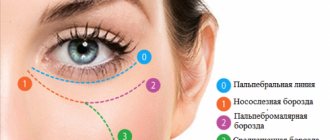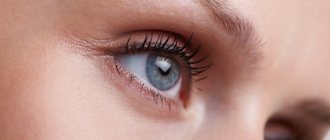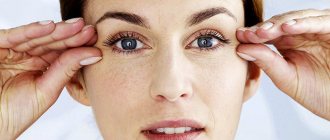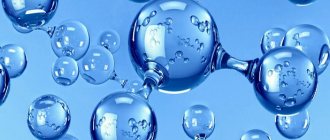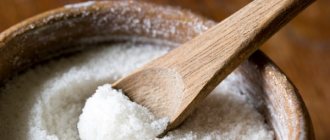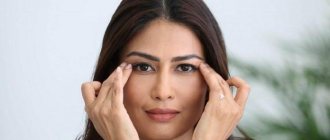It is based on blocking nerve impulses entering the muscle fibers of facial muscles, as well as its general relaxation. The history of its appearance in aesthetic medicine has a typical beginning: ophthalmologists, treating strabismus and blepharospasm with special drugs, discovered an interesting side effect, expressed in the complete smoothing of crow's feet. They passed on their observations to cosmetologists, after which a revolution took place in aesthetic medicine, based on the advent of a “cure” for wrinkles - the drug Botox.
According to statistics and ASPS data, botulinum therapy is the most popular anti-aging procedure in the United States - it is performed more than 6,700,000 times annually throughout the country.
The principle of action of drugs for botulinum therapy
The botulinum therapy procedure involves a series of injections of drugs based on botulinum neurotoxin type A. The main component is obtained in the laboratory by extracting the protein complex of Clostridium botulinum microorganisms. The dosages of the substance present in preparations for botulinum therapy are safe for the human body.
Botulinum neurotoxin type A has an isolated effect on the facial muscles. It blocks the supply of nerve impulses to the fibers, inhibiting the neurotransmitter acetylcholine in the neuromuscular connections, and provides general muscle relaxation in the injection area. A decrease in the tone of the facial muscles, combined with a partial suppression of its innervation, leads to the smoothing of skin creases that arise from constant contractions of the facial muscles during laughter, smiling, surprise and other “vivid” emotions.
An age-related decrease in skin firmness and elasticity leads to the formation of wrinkles in areas of increased facial expression. Botulinum therapy stops the root cause of their formation. Many patients note the delayed effect of Botox, Dysport and Xeomin injections - a gradual adaptation of facial expressions to a calm, smooth and neutral state, preventing the appearance of wrinkles in the future. Botulinum therapy is unable to influence other aging mechanisms, such as skin dehydration, gravitational ptosis, photodamage, etc. It solves exclusively the problem of facial wrinkles, so one cannot rely on the procedure as a panacea for age-related changes.
Injection procedures for skin rejuvenation
Contour plastic
Contour plastic surgery is a method of injection correction of wrinkles, which is based on the intradermal injection of a sterile gel (filler) of dense consistency under the patient’s skin. To carry out the procedure, drugs that include hyaluronic acid (Belotero basic, Hyaluform, Teosyal, Restylane, Glytone, Surgiderm), polycaprolactone (Ellanse) and calcium hydroxyapatite (Radiesse) are most often used. Intradermal injection of a dense consistency gel allows you to instantly smooth out medium and deep wrinkles on the forehead and bridge of the nose. The effect of contouring is noticeable immediately and lasts for 6-15 months (depending on the density of the gel).
The estimated cost of one injection is 80-100 USD.
Mesotherapy
Mesotherapy is a procedure for rejuvenating the skin of the upper part of the face, which is based on saturating the mesoderm with special nutrients. The active components that are part of mesotherapy cocktails activate the process of collagen production, increase the elasticity of collagen and elastin fibers and contribute to the complete renewal of the epidermis, due to which the skin is smoothed. Mesotherapy helps fight the first wrinkles on the forehead, which arise due to excessive activity of the facial muscles. The effect of its implementation becomes noticeable after 2-3 procedures, and the course consists of 10 sessions. The result lasts for 6-12 months.
The estimated cost of mesotherapy for the upper third of the face is 30-70 USD.
Botulinum therapy
Botulinum therapy is an injection technique for smoothing wrinkles, which is based on the intramuscular injection of botulinum toxin into the upper third of the face, a drug that temporarily paralyzes facial muscles (Botox, Dysport, Xeomin). The temporary absence of facial activity helps smooth out skin folds. The effect of the procedure lasts for about a year. It helps not only to get rid of horizontal and vertical wrinkles on the forehead, but also helps smooth the skin on the bridge of the nose and the back of the nose. To correct forehead wrinkles and glabellar folds, 5-50 units of botulinum toxin will be required.
The price of one unit of the drug is 4 USD, the estimated cost of the procedure is 120-160 USD.
Thread lifting
Forehead thread lifting (thread lifting) is a non-surgical technique for tightening the skin of the upper third of the face, which is based on the introduction of special absorbable or non-absorbable threads under the patient’s skin. Intradermal introduction of threads into the skin of the forehead makes it possible to form a strong frame in the dermis, which tightens the tissue, smooths out even deep wrinkles, and prevents sagging of the skin. Depending on the type of material used, there is thread lifting with mesothreads (absorbable within 180 days), gold threads (made of pure gold) and Aptos threads (non-absorbable suture material, which is produced on the basis of a mixture of polypropylene and caproic acid). The effect of the procedure is noticeable immediately and lasts for two years.
The estimated cost of a forehead thread lift is 300-600 USD.
Comparison of drugs based on botulinum neurotoxin type A
In Russian cosmetology practice, three drugs are used for botulinum therapy - Botox, Dysport and Xeomin. They all contain identical active ingredients, but differ in a number of parameters. Below is a comparative table of the three drugs, detailing the features, advantages and disadvantages of each.
| A drug | Compound | Number of units for each zone | Duration of action | Specific characteristics |
| "Botox" (Botox), produced by Allergan (USA) since 1989 | Botulinum neurotoxin type A, human serum albumin, sodium chloride | Forehead – 10-30 units. Between the eyebrows – 5-25 units. Eyelids – 5-15 units. (or 10-30 units on both sides) Eyebrows (raising) – 3-5 units. Nose / bridge of the nose – 5-10 units. Jaw – 35-60 units. Neck – 25-50 units. | 6 months for the first session, up to 7-8 months for subsequent sessions | The most studied and popular botulinum therapy drug with an ideal price-quality ratio. Requires small dosages, works stably for six months, is used for various purposes, including medicinal |
| "Dysport", produced by the Ipsen concern (France) since 2004 | Botulinum neurotoxin type A (concentration almost 2 times lower than in Botox), human serum albumin, lactose | Forehead – 30-90 units. Between the eyebrows – 15-75 units. Eyelids – 15-45 units. (or 30-90 units on both sides) Eyebrows (raising) – 9-15 units. Nose / bridge of the nose – 15-30 units. Jaw – 105-180 units. Neck – 75-150 units. | 4-6 months | The first European competitor to Botox. It has a lower concentration of the active substance and a lower cost per unit. It is characterized by rapid diffusion in muscle tissue, therefore it is recommended for emergency correction of facial wrinkles (for example, 1-2 days before an important event). For the same reason, it requires more caution and skills from the cosmetologist. |
| "Xeomin" (Xeomin), produced by Merz Pharma (Germany) since 2005 | Sterile Lyophilized Botulinum Neurotoxin Type A | Forehead – 10-25 units. Between the eyebrows – 20-25 units. Eyelids – 10-15 units. (or 20-30 units on both sides) Eyebrows (raising) – 5-7 units. Nose / bridge of the nose – 5-15 units. Jaw – 45-50 units. Neck – 30-50 units. | 4-5 months | The safest drug available. The likelihood of any unwanted complications with the introduction of Xeomin is 7.4% lower than with the introduction of Botox. “Xeomin” is also notable for preserving natural facial expressions in full. |
According to new research, the drug Botox can be somewhat addictive, and therefore cosmetologists advise varying the drugs from time to time. If you notice a decrease in the effectiveness of Botox injections, you are recommended to alternate them with Xeomin or Dysport injections.
Use at home
Filling wrinkles with hyaluronic acid at home without the involvement of a specialist is impossible. Without introduction into the subcutaneous layers, the substance does not fully reveal its properties. But it is permissible to use gels and creams based on it as preventive agents against early skin aging.
Masks
Masks containing hyaluronic acid should be applied to cleansed skin of the face, neck and décolleté, avoiding the area around the eyes and lips. The duration of the procedure is 15 minutes, after which there is no need to wash off the product.
- Mix hyaluronic acid (1 g) and nicotinic acid (30 g) in powder in one container. Dilute with a small amount of warm water until thick.
- Mix hyaluronic acid powder (1 g) with oatmeal (40 g) ground into flour. Add 1 tbsp. l. lemon juice, 2 - 3 beaten egg whites and stir the mask well. 15 minutes after application, rinse with warm water.
- Mix 4 drops of acid in ampoules with 1 chicken egg yolk and 1 tsp. grapefruit pulp. Apply to skin and rinse with warm water after 20 minutes. If a burning sensation occurs, the procedure should be completed earlier.
- Mix 5 drops of liquid acid with 2 tbsp. l. fat kefir. Apply to skin using a brush and rinse off after 20 minutes.
Crema
The easiest way to use hyaluronic acid prophylactically is to add it to face cream. It is recommended to maintain a proportion of 1 part acid to 200 parts cream.
Related articles:
Folk remedies for facial wrinkles: how to keep your skin youthful
Anti-wrinkle cream around the eyes: the best brands and folk recipes
You can also prepare the product yourself:
- Dilute 500 mg of liquid hyaluronic acid with 10 ml of water, stir until completely dissolved. Add 1 tsp. chopped parsley, knead and apply to face. The duration of the procedure is 15 minutes, after which the mass must be removed with a towel soaked in water. This anti-wrinkle cream with hyaluronic acid has very good reviews, and is especially effective for dry, flaky skin.
- Dissolve 500 mg of acid in 10 ml of water. Add 8 g of zinc paste, which can be purchased at the pharmacy. Apply with gentle movements, wait until absorbed. You don't have to wash it off.
- Dilute the hyaluronic acid in the proportion indicated above. Add 10 ml of steamed olive oil and apply to skin with a brush. After 20 minutes, rinse with warm water without soap.
- Mix 20 ml of water, 500 mg of acid and 20 g of coconut oil. Stir until smooth. Apply with gentle massage movements, wait until the cream is completely absorbed.
- Combine the components in one container: 20 ml of water, 500 mg of hyaluronic acid, 20 ml of almond oil. After obtaining a homogeneous mass, it can be applied to the face with a cosmetic brush. The cream helps well against wrinkles on the forehead and other problem areas.
- Prepare a chamomile decoction (1 tbsp of dried crushed flowers per glass of boiling water), separate 20 ml from the total volume. Mix the decoction with 500 mg of acid in ampoules and 20 ml of peach oil. Apply to face along massage lines using a brush.
Indications for botulinum therapy
Indications for botulinum therapy are facial wrinkles of any location and severity. Typically, the following areas of the face are treated with botulinum neurotoxin type A:
- Forehead (horizontal “wrinkles of surprise”);
- Between the eyebrows, or glabella (vertical “wrinkle of anger”);
- The bridge of the nose (horizontal folds formed when laughing);
- Periorbital and temporal zone (“crow’s feet”);
- Jaw line (wrinkles in the dimple area of the cheeks);
- Neck (horizontal “rings of Venus” on the front).
In addition, the drugs raise eyebrows when they droop with age.
How is botulinum therapy performed?
Botulinum therapy is the introduction of a series of injections into strictly specified points of the face responsible for the facial activity of a particular area. The procedure is relatively painless, but for patients with a low pain threshold it requires preliminary anesthesia. In this case, a lidocaine-based cream “Emla” is applied, applied to the skin in a thick layer and placed under a film for 20-25 minutes. Botulinum neurotoxin type A preparations are injected into the surface layer of the skin using ultra-thin miniature needles. The bottle with the solution is opened in the presence of the patient. The cosmetologist marks out the treatment areas in advance and injects the drug into the points of maximum innervation of muscle fibers (they do not always coincide with the actual points of wrinkle formation). Next, the cosmetologist performs a gentle manual massage of the skin for optimal distribution of the drug. The patient is asked to grimace (frown, raise his eyebrows, smile broadly) for the next 2-4 hours - this will contribute to a better effect of neurotoxins. To avoid neutralizing the effect, you should avoid drinking alcoholic beverages, staying in a solarium or in the sun, or visiting baths and saunas for the next week.
Could there be consequences?
After injection of hyaluronic acid, papules from punctures remain on the skin for some time, which soon disappear. It is possible that minor pain, swelling, redness may occur; in rare cases, hematomas, rashes, and itching may form. If you follow the doctor's recommendations, all side effects quickly go away:
- a day after the procedure, it is advisable to relax all the facial muscles as much as possible, make facial movements as little as possible, do not touch the skin with your hands, sleep only on your back, without touching the pillow with your face;
- do not visit the sauna, bathhouse, or swimming pool for 2 weeks. It is recommended not to overuse tanning, as ultraviolet radiation leads to the rapid breakdown of hyaluronic acid;
- refrain from intense physical activity for a week so as not to provoke swelling;
- until complete healing, you cannot apply cosmetics to your face or perform caring procedures (peeling, massage, steaming, etc.);
- you should give up alcohol and smoking.
After the injection of fillers, there is a risk of developing fibrosis, lymph stagnation, hyperpigmentation of the skin, and the formation of benign tumors of adipose or connective tissue, which manifest themselves in the form of thickenings or nodules at the injection sites. And all because hyaluronate is part of the intracellular matrix and is actively involved in the process of cell division.
If a person has an innate tendency to develop autoimmune diseases (psoriasis, systemic lupus, pemphigus, lichen ruber), then using hyaluronic acid injections against wrinkles is undesirable, as they can serve as an impetus for the occurrence of pathology.
In rare cases, an increased content of hyaluronic acid in the skin leads to an acceleration of the synthesis of hyaluronidase, which triggers the process of hydrolysis in the tissues. And this is fraught with the penetration of cancer cells into the bloodstream through the walls of blood vessels.
Possible complications
Botulinum toxin therapy procedures practically do not cause unwanted complications if performed in a reputable clinic by a qualified cosmetologist. When performing injections at home or in other makeshift conditions, as well as in violation of the technique of administering drugs, the following complications may develop:
- Facial asymmetry;
- Ptosis (drooping of the upper eyelid);
- “Face-mask” effect.
Also, complications of botulinum therapy can be expressed in allergic reactions, nausea, skin paresthesia, dyspepsia, respiratory failure (if the permissible dosage is significantly exceeded).
What is hyaluronic acid used for?
Hyaluronic acid not only absorbs and retains moisture in skin cells, but also participates in the construction of important proteins that act as a tissue framework. Without it, the integument loses turgor and sag. Over the years, hyaluronate is produced by our body in smaller and smaller quantities. A bad lifestyle, bad habits, vitamin deficiency, frequent visits to the solarium and excessive sun tanning have a negative impact on the processes of acid synthesis.
Fortunately for us, they have learned to produce hyaluronate artificially:
- from animal raw materials (rooster and chicken combs, synovial fluid, cartilage, animal eyes);
- by fermentation with bacteria (mainly streptococci, which produce the substance in a special nutrient medium).
The first group of drugs is now practically not used, as it can cause serious allergic reactions and unpredictable side effects. Synthetically produced hyaluronic acid, on the contrary, is hypoallergenic and safe.
